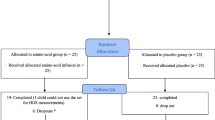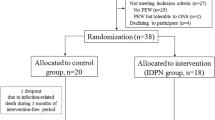Abstract
Purpose
The present investigation deals with the impact of protein energy malnourished condition on the pharmacokinetic profile of glibenclamide. Protein energy malnourished condition leads to malnutrition related diabetes mellitus (MRDM), Fibrocalculus pancreatic diabetes mellitus (FCPD) or Lean body mass diabetes mellitus (LBMDM).
Method
In the present study, malnutrition was developed in female wistar rats using a modified protein deficient diet (0.5%). The experiment was performed on 12 animals, each group containing 6 female wistar rats. The control group animals were fed with standard pellet diet (AIN 93 G diet) while group 2 received the low protein diet (0.5%) for 75 days. Glibenclamide (Gli) suspension (30 mg/kg) was administered orally to these rats on 75 days and kinetic parameters were evaluated by HPLC analysis.The pharmacokinetic interpretation done by pksolver software version 2.0, statistical comparison done by applying student T test.
Results
The results of body weight and hematological parameters indicated a significant decreased in the body weight in protein deficit rats to 124.1 ± 6.2 g compared to 235.5 ± 8.4 g (p < 0.01) control rats; whereas a decrease in the hemoglobin to 5.8 ± 0.6 g/dL, total blood protein level to 6.9 ± 0.6 g/dL and blood albumin levels to 2.7 ± 0.4 g/dL in protein deficit rats compared to 15 ± 0.7 g/dL(p < 0.05), 8.1 ± 0.4 g/dL(p < 0.05), and 4.5 ± 0.2 g/dL(p < 0.05), respectively in control rats. All these findings reflect the malnourished condition and weight loss due to a protein deficit diet in experimental animals. There was an increase in the fasting blood glucose levels up to 150 ± 17.4 mg/dL in the protein deficit diet group as compared to 98.7 ± 14.1 mg/dL(p < 0.05) in control rats reflect the prediabetes state in malnourished animals. The results of the pharmacokinetic study reflect a significant lowering of half-life (T½) of glibenclamide to 96.8 ± 0.8 min. in malnourished rats compared to 166.7 ± 0.74 min. (p < 0.001) in control rats. The maximum concentration (Cmax) of glibenclamide in the malnourished rats was significantly higher 20.74 ± 0.65 μg/mL and also took double time i.e. about 180 min. to reach maximum concentration (Tmax) compared to the control rats values 7.9 ± 0.84 μg/mL (p < 0.001) and 90.0 ± 0.24 min. (p < 0.001) respectively. The area under the plasma concentration-time curve [AUC(0–∞)] in malnourished rats increased 4439.1 ± 40.6 μg/ml*min as compared to 1235.9 ± 55.8 μg/ml*min (p < 0.001) in control rats. There was a lowering in the total body clearance (CL) to 0.4 ± 0.02 L/hr and volume of distribution (Vd) to 1.75 ± 0.07 L of glibenclamide in the protein deficit group compared to 1.4 ± 0.3 L/hr (p < 0.001) and 3.14 ± 0.8 L (p < 0.01), respectively in the control rats.
Conclusion
From this study it concludes that there is an increase in the T½, Cmax, Tmax and AUC(0–∞) of glibenclamide in malnourished rats while the total body clearance and volume of distribution is lowered. Therefore this study proposes to conduct an adequate pharmacokinetic study in malnourished patients to decide whether the standard glibenclamide dose should be adapted according to the nutritional status of the individual.

Similar content being viewed by others
References
Walter-sack I, Klotz U. Influence of Diet and Nutritional Status on Drug Metabolism. Clin Pharmacokinet. 1996;31:47–64.
Krishnaswamy K. Drug metabolism and pharmacokinetics in malnourished children. Clin Pharmacokinet. 1989;17(suppl1):68–88.
Al-amin AN, Ahrén B. “Relation between malnutrition and Development of Diabetes Mellitus Malnutrition and Diabetes Mellitus” Int J Pancreatol, vol.26, no.3,pp.125 – 30, 1999,https://doi.org/10.1385/IJGC:26:3:125
Dostalek M, Akhlaghi F, Puzanovova M. Effect of diabetes Mellitus on Pharmacokinetic and Pharmacodynamic Properties of drugs. Clin Pharmacokinet. 2012;51. https://doi.org/10.2165/11631900-000000000-00000. no.8, pp.481 – 99.
Rao RH. The role of undernutrition in the pathogenesis of diabetes mellitus. Diabetes Care. 1984;7(6):595–601. https://doi.org/10.2337/diacare.7.6.595
Coppack SW, Lant AF, McIntosh CS, Rodgers AV. Pharmacokinetic and pharmacodynamic studies of glibenclamide in non-insulin dependent diabetes mellitus. Br J Clin Pharmacol. 1990;29(6). https://doi.org/10.1111/j.1365-2125.1990.tb03688.x. .673 – 84.
Tawfeek HM, Roberts M, El Hamd MA, Abdellatif AAH, Younis MA. Glibenclamide mini-tablets with an enhanced pharmacokinetic and pharmacodynamic performance, AAPS PharmSciTech, vol. 19, no.7, 2018, https://doi.org/10.1208/s12249-018-1108-y
Rashid A, Ahmad M, Minhas MU, Hassan IJ, Malik MZ. Pharmacokinetic studies of metformin and glibenclamide in normal human volunteers. Pak J Pharm Sci. 2014;27(1):153–9.
Suku S. Malnutrition related diabetes Mellitus in Indian Population. Int J of Res and Rev. 2020;7(7):136–42. https://www.ijrrjournal.com/IJRR_Vol.7_Issue.7_July2020/IJRR0015.pdf
Hayes Johnnie R, Mgbodile Marcel UK, Merrill Alfred H, Jr, Nerurkar Lata S, Campbell T, Colin. The Effect of Dietary protein depletion and repletion on rat hepatic mixed function oxidase activities. J Nutr. 1978;108(11):1788–97. https://doi.org/10.1093/jn/108.11.1788
Verrest L, Wilthagen EA, Beijnen JH, Huitema ADR, Dorlo TPC. Influence of Malnutrition on the pharmacokinetics of drugs used in the treatment of poverty-related Diseases: a systematic review. Clin Pharmacokinet. 2021;60(9):1149–69. https://doi.org/10.1007/s40262-021-01031-z
Olsen KM, Kearns GL, Kemp SF. Glyburide protein binding and the effect of albumin glycation in children, young adults, and older adults with diabetes, J Clin Pharmacol, vol. 35.no.7, pp.739 – 45,1995 https://doi.org/10.1002/j.1552-4604.1995.tb04115.x
Lee YK, Yoon I, Lee MG, Choi YH. “Effects of cysteine on the pharmacokinetics of tamoxifen in rats with protein-calorie malnutrition”, Xenobiotica, vol.42, no.12, pp.1225-34,2012, https://doi.org/10.3109/00498254.2012.683498
El-Demerdash E, Ali AA, El-Taher DE, Hamada FM. Effect of low-protein diet on anthracycline pharmacokinetics and cardiotoxicity. J Pharm Pharmacol. 2012;vol64(no3):344–52. https://doi.org/10.1111/j.2042-7158.2011.01413.x
Zhou L, Naraharisetti SB, Liu L, Wang H, Lin YS, Isoherranen N, Unadkat JD, Hebert MF, Mao Q. “Contributions of human cytochrome P450 enzymes to glyburide metabolism,“ Biopharm Drug Dispos. vol 31 no.4, pp.228 – 42,2010, https://doi.org/10.1002/bdd.706
Yang F, Liu L, Chen L, et al. ., OATP1B3 (699G > A) and CYP2C9*2, *3 significantly influenced the transport and metabolism of glibenclamide and glipizide. Sci Rep. 2018;8(18063). https://doi.org/10.1038/s41598-018-36212-7
Zarezadeh M, Saedisomeolia A, Shekarabi M, Khorshidi M, Emami MR, Müller DJ. The effect of obesity, macronutrients, fasting and nutritional status on drug-metabolizing cytochrome P450s: a systematic review of current evidence on human studies. Eur J Nutr. 2021;60(6):2905–21. https://doi.org/10.1007/s00394-020-02421-y
Tournier N, Saba W, Cisternino S, Peyronneau MA, Damont A, Goutal S, Dubois A, Dollé F, Scherrmann JM, Valette H, Kuhnast B, Bottlaender M. Effects of selected OATP and/or ABC transporter inhibitors on the brain and whole-body distribution of glyburide. AAPS J. 2013;15(4):1082–90. https://doi.org/10.1208/s12248-013-9514-2
Van Zutphen T, Ciapaite J, Bloks VW et al. “Malnutrition-associated liver steatosis and ATP depletion is caused by peroxisomal and mitochondrial dysfunction”, J Hepatol, vol.65,no.6,pp.1198–1208, 2016,. https://doi.org/10.1016/j.jhep.2016.05.046
Zhang L, Voskuijl W, Mouzaki M, Groen AK. Impaired bile acid homeostasis in children with severe Acute Malnutrition. PLoS ONE. 2016;11(5). https://doi.org/10.1371/journal.pone.0155143. e0155143.
Jemal A. Malnutrition-related diabetes Mellitus in Africa. Int J Diab Dev Countries. 1993;13:22–8. https://rssdi.in/newwebsite/journal/1993_jan-june/article3.pdf
Bhat JA, Bhat MH, Misgar RA, Bashir MI, Wani AI, Masoodi SR, Ashraf H, Sood M. The clinical spectrum of Fibrocalculous pancreatic diabetes in Kashmir Valley and comparative study of the Clinical Profile of Fibrocalculous pancreatic diabetes and type 2 diabetes Mellitus. Indian J Endocrinol Metab. 2019;23:580–4. https://doi.org/10.4103/ijem.IJEM_297_19
Acknowledgements
We would like to acknowledge the support of Dr. Ashwini Madgulkar, Principal AISSMS College of Pharmacy, Pune and management for providing infrastructure facilities and guidance throughout the project work.
Funding
The authors did not receive any financial support from any organization for the submitted work.
Author information
Authors and Affiliations
Corresponding author
Ethics declarations
Competing interests
The authors have no competing interests to declare that are relevant to the content of this article.
Additional information
Publisher’s Note
Springer Nature remains neutral with regard to jurisdictional claims in published maps and institutional affiliations.
Rights and permissions
Springer Nature or its licensor (e.g. a society or other partner) holds exclusive rights to this article under a publishing agreement with the author(s) or other rightsholder(s); author self-archiving of the accepted manuscript version of this article is solely governed by the terms of such publishing agreement and applicable law.
About this article
Cite this article
Tembhurne, S., Palkar, P., Kolhe, S. et al. Impact of protein deficient diet on the pharmacokinetics of glibenclamide in a model of malnutrition in rats. J Diabetes Metab Disord 22, 1531–1536 (2023). https://doi.org/10.1007/s40200-023-01282-6
Received:
Accepted:
Published:
Issue Date:
DOI: https://doi.org/10.1007/s40200-023-01282-6




